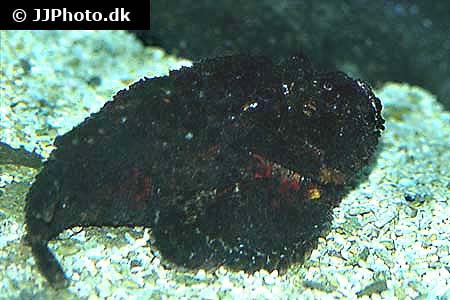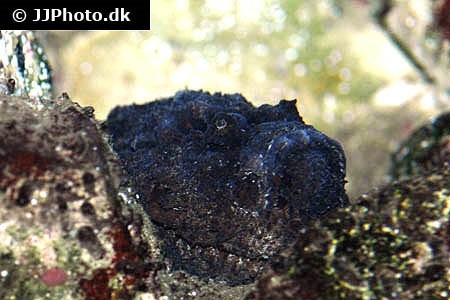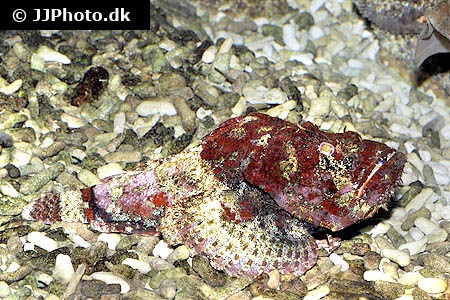Synanceia horrida
| Latin name | Synanceia horrida - (Linnaeus, 1766) |
|---|---|
| Local name | Estuarine stonefish |
| Family | Synanceiidae - Synanceia |
| Origin | East Indian Ocean, West Indian Ocean, Australia, Japan, Indonesia, New Zealand, Central/West Pacific |
| Max length | 60 cm (23.6") |
| Minimum volume |
200 l (53 gal) |
|---|---|
| Hardiness |
Hardy |
| Suitable for aquarium |
Not suitable for home aquarium |
| Reef safe |
Reef safe with caution |
| Aggressiveness | Peaceful |
| Recommended |
Fish Larger crustaceans (Shrimp, crabs...) |
|---|
This species is highly venomous and this venom can, under certain circumstances, be fatal.
In case of poisoning, it is vital to have as much information as possible regarding the species/poison. Have telephone number for the poison hotline close to the aquarium.
Since people can have different reactions to poisons, take precautions necessary to ensure your safety and that of your surroundings.
These fish prefer live feed, such as live fish or shrimp. Some specimens refuse "dead" food altogether, while others can be trained to accept it.
Its easiest to move the frozen food around in front of the fish with a pair of tweezers. As soon as the fish shows interest and “attacks”, let go of the food.
They will try to eat all fish, shrimps and similar life forms that are small enough to fit in itheir mouth.
They should be fed a couple of times a week.
The fish and shrimps used as foods, must remain whole to give the Lionfish the optimum nutrition. The food must not be thawed naturaly, this helps to retain all the goodness.
Suitable live food are: Mollies, Guppies and Ghostshrimp. The feeder fish or shrimp should be fed with nutritious feed, like Cyclop-eeze for example.
These fish are amongst the most poisonous in the world and are consequently not normally kept in a domestic aquarium.
They do best when they can dig themselves down into the substrate.
Stingers/Stonefishes (Synanceiidae) consist of several genera, the Synanceia species however is a good example of a stonefish as these fishes hides on the bottom camouflaged as a stone.
They are generally hardy and do not need a large swimming area, but do often require being fed with small live fish and/or shrimps. Some will quickly begin eating frozen fish or shrimp while others will refuse to eat "dead" food.
Their food must be highly nutritious and varied. They must not be fed too often: twice a week and then until the fish does not want more, is sufficient.
These fish are mostly peaceful, but will eat anything which can be swallowed whole. One would be surprised by how large the prey is that they can swallow, they can even eat fish which nearly match their own length. They will also eat each other, if the size difference is enough. Their poisonous spines do not guarantee that they will not be eaten by other predatory fishes.
Do be cautious when having your hands in the aquarium as these fish are very poisonous.
Stingers require a special substrate, either coral gravel or fine sand, as this resembles their natural habitat.
| Distribution | Indo-West Pacific: India to China, Philippines, Papua New Guinea and Australia. Reported from Vanuatu (Ref. 13300). |
|---|---|
| German common names |
Steinfisch |
| English common names |
Estuarine stonefish |
| Danish common names |
Delta-stenfisk |
Scott W. Michael. 2001. Reef Fishes volume 1 - TFH Publications / Microcosm Ltd. - (English)
Bob Fenner. The Deadly Fishes Called Stones: Family Scorpaenidae, Subfamily Synanceinae - Wet Web Media - (English)





